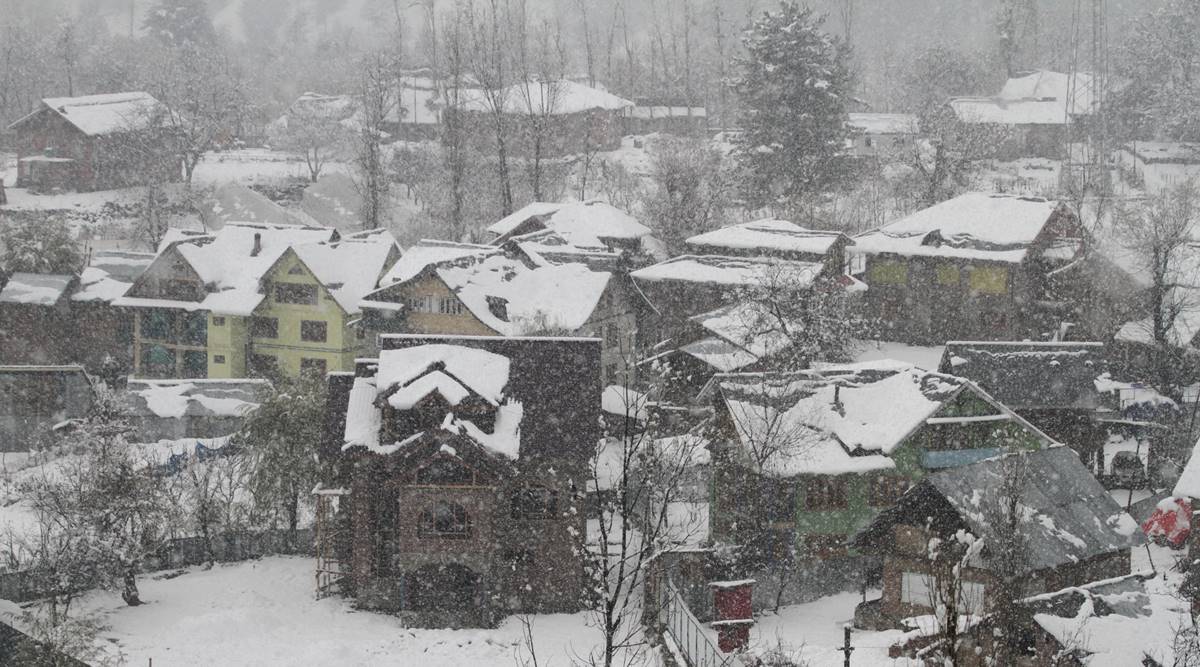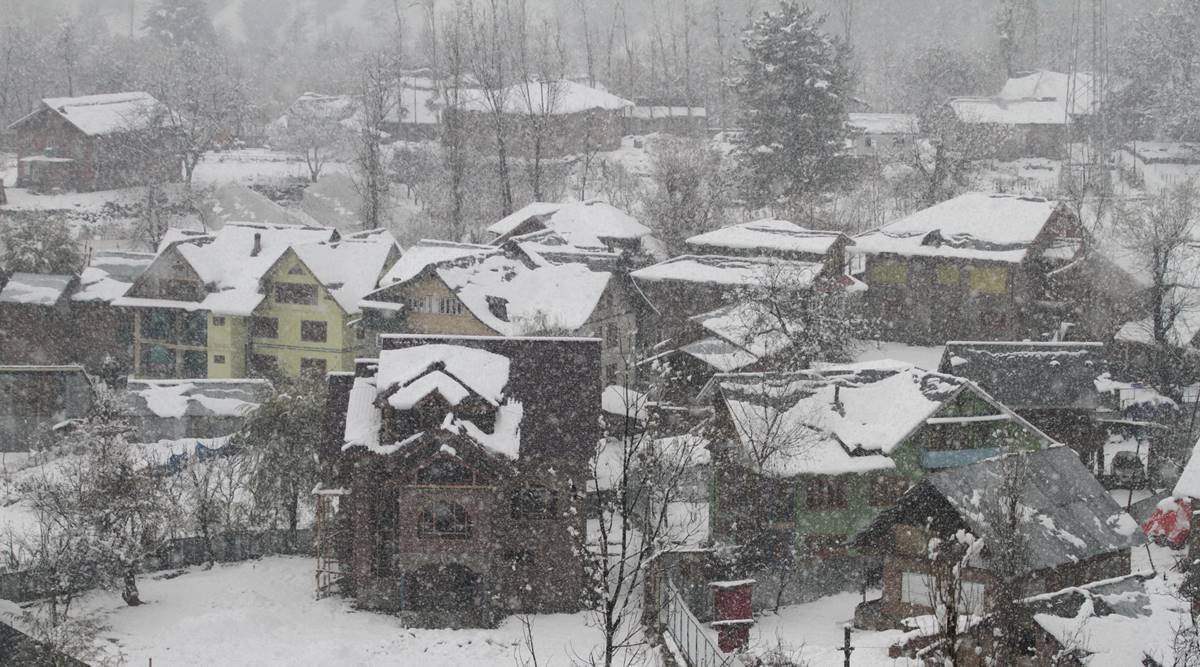| Pune |
Updated: November 29, 2020 7:07:58 pm

Snow-covered houses in Tangmarg of Jammu and Kashmir. (Express photo: Shuaib Masoodi)
Rajasthan, New Delhi, Jammu and Kashmir and Ladakh, along with other states in Northern and North-western India, are set to experience a colder winter during December to January.
This was stated in the India Meteorological Department (IMD) seasonal forecast ‘Seasonal Outlook for Temperatures during December 2020 to February 2021’ issued on Sunday.
IN PICTURES | Himachal wrapped in white after season’s first snowfall
“During the winter season, below normal minimum temperatures are likely over most sub-divisions in the north, northwest, central and a few subdivisions in east India,” said the seasonal forecast.
Delhi recorded the decade’s coldest November day on Sunday, with the mercury settling at 7 degree Celsius, which was 3 degrees below normal.
During the next three months, west Rajasthan, east Rajasthan, Jammu and Kashmir and Ladakh, Chhattisgarh and east Madhya Pradesh subdivisions can expect below-normal minimum temperatures.
On the other hand, Madhya Maharashtra, Konkan and the entire southern peninsular region will experience either a normal or a warmer winter this season.
Last two winters, particularly over the North and Northwest India, have remained severe.
In 2018, a phenomenon named polar vortex had brought highly cold winds from the North Pole penetrating lower latitudes, including India. Similarly, last year, a severe cold wave gripped Delhi and neighbouring areas for over three weeks in December.
This year, the cooler winter is linked to moderate La Nina conditions prevailing over the Pacific Ocean.
“During the La Nina years, minimum temperatures tend to remain slightly below normal. In addition, some synoptic conditions could help keep the temperatures below normal,” said Dr D Sivanand Pai, head, Climate Research and Services at IMD, Pune.
On the contrary, day time could remain warmer during these months over most areas, Pai added.
The seasonal forecast said that most subdivisions, except southern India, are likely to experience above normal maximum temperatures.
Weak conditions of La Nina –– the abnormal cooling of the seas along the central and equatorial Pacific Ocean –– prevailed since August. They have cooled further to become ‘moderate’ conditions recently. The IMD has said that La Nina conditions would continue till the end of the winter season.
© The Indian Express (P) Ltd
This article is auto-generated by Algorithm Source: indianexpress.com


